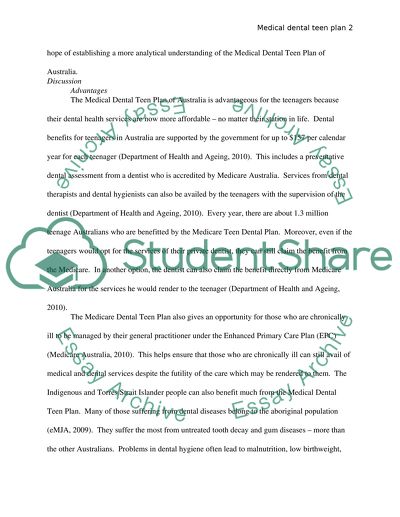Cite this document
(Medical Dental Teen Plan Term Paper Example | Topics and Well Written Essays - 2250 words, n.d.)
Medical Dental Teen Plan Term Paper Example | Topics and Well Written Essays - 2250 words. Retrieved from https://studentshare.org/health-sciences-medicine/1569288-discuss-the-advantages-and-disadvantages-of-the-medicare-teen-dental-plan-and-if-you-consider-this-to-be-good-public-health-policy
Medical Dental Teen Plan Term Paper Example | Topics and Well Written Essays - 2250 words. Retrieved from https://studentshare.org/health-sciences-medicine/1569288-discuss-the-advantages-and-disadvantages-of-the-medicare-teen-dental-plan-and-if-you-consider-this-to-be-good-public-health-policy
(Medical Dental Teen Plan Term Paper Example | Topics and Well Written Essays - 2250 Words)
Medical Dental Teen Plan Term Paper Example | Topics and Well Written Essays - 2250 Words. https://studentshare.org/health-sciences-medicine/1569288-discuss-the-advantages-and-disadvantages-of-the-medicare-teen-dental-plan-and-if-you-consider-this-to-be-good-public-health-policy.
Medical Dental Teen Plan Term Paper Example | Topics and Well Written Essays - 2250 Words. https://studentshare.org/health-sciences-medicine/1569288-discuss-the-advantages-and-disadvantages-of-the-medicare-teen-dental-plan-and-if-you-consider-this-to-be-good-public-health-policy.
“Medical Dental Teen Plan Term Paper Example | Topics and Well Written Essays - 2250 Words”. https://studentshare.org/health-sciences-medicine/1569288-discuss-the-advantages-and-disadvantages-of-the-medicare-teen-dental-plan-and-if-you-consider-this-to-be-good-public-health-policy.


